Affiliate links on Android Authority may earn us a commission. Learn more.
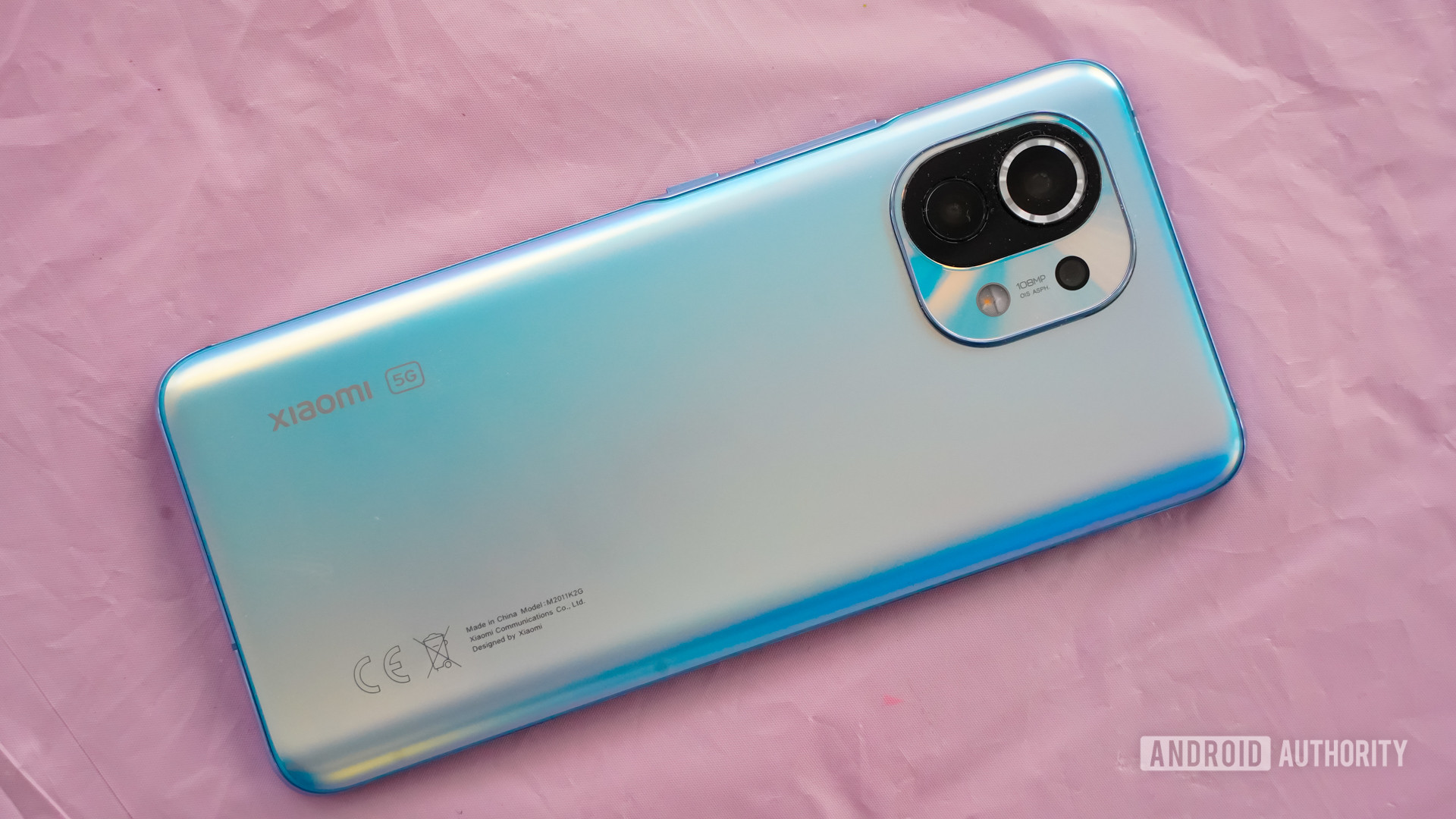


Xiaomi Mi 11
What we like
What we don't like
Our scores

Xiaomi Mi 11
Xiaomi is making no secret about who should buy the new Mi 11. “The Mi 11 is for movie lovers,” says Xiaomi boldly on its website. Whether you’re watching movies on the luscious display or shooting your own movies with the pixel-rich camera, the Xiaomi Mi 11 is all about the cinematic experience. But the phone is so much more than that. Can a phone such as the Xiaomi Mi 11 convince Samsung and Apple owners to jump ship? Find out in Android Authority’s Xiaomi Mi 11 review.
Updated July 2021: Added references to newer Mi 11 models and other competitors.
What you need to know about the Xiaomi Mi 11
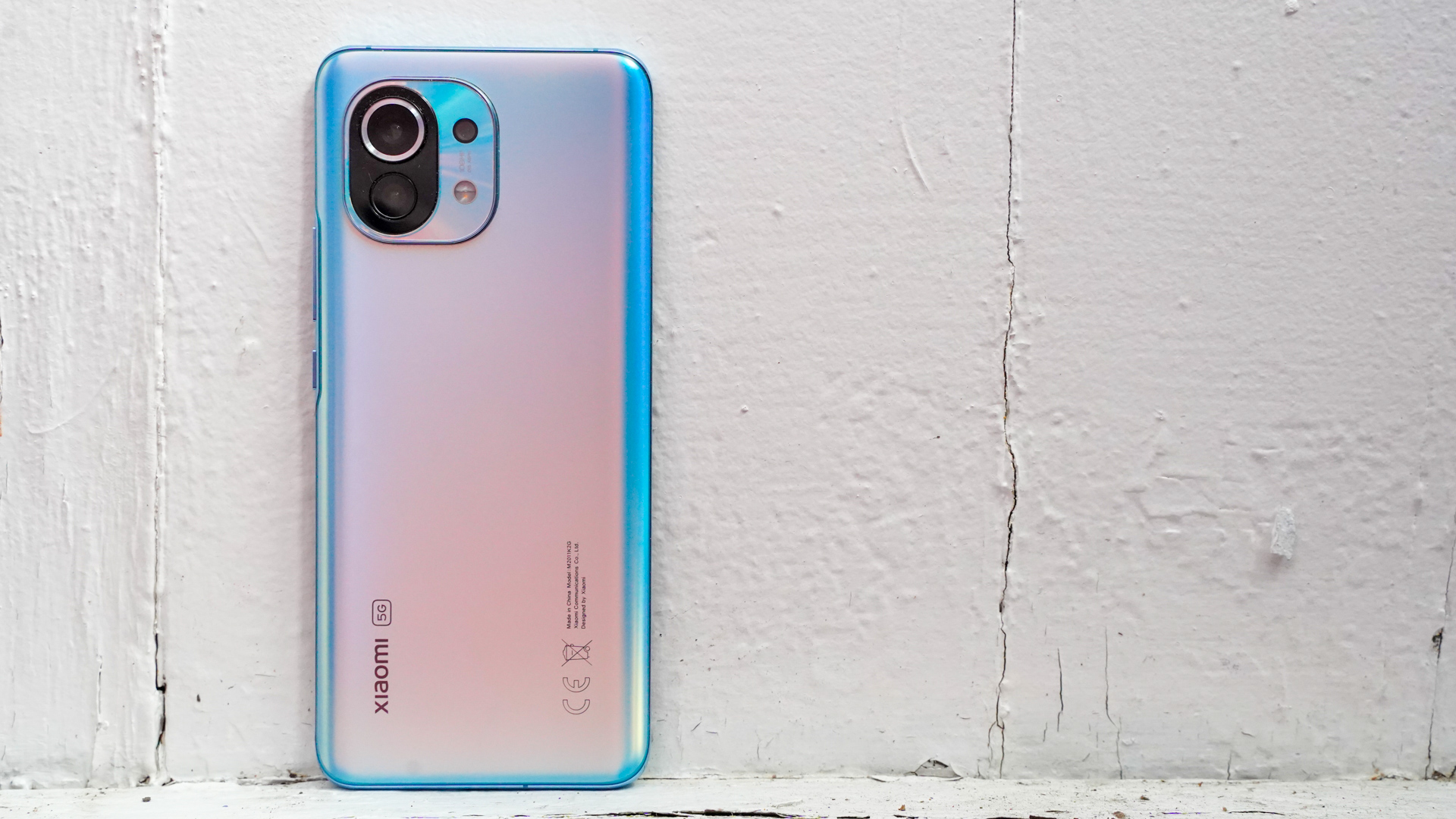
- Xiaomi Mi 11 (8GB/128GB): €749/£749
- Xiaomi Mi 11 (8GB/256GB): €799/£799
The Mi 11 is Xiaomi’s first flagship of 2021 and it contends with the likes of the Samsung Galaxy S series, as well as the best from Apple, Google, OPPO, and others. The company went all out. Not only does the phone boast a stunning design, but it also packs an impressive spec sheet. It’s a high-end phone for everyday creators, those who capture their world in all its forms as they walk through it.
Sales kicked off in China in January, and Xiaomi opened up sales of the phone in Europe starting in February. The two storage variants cost €749 (~$900) and €799 (~$960), respectively, for the 128GB and 256GB models. Though the Mi 11 launched as a solo phone, it is now part of a larger family that includes the Xiaomi Mi 11 Lite, the Mi 11 Pro, and the Mi 11 Ultra. Several designs are available, including Cloud White, Midnight Gray, and Horizon Blue. Special edition finishes are also available.
Design: Frosty, but in a good way
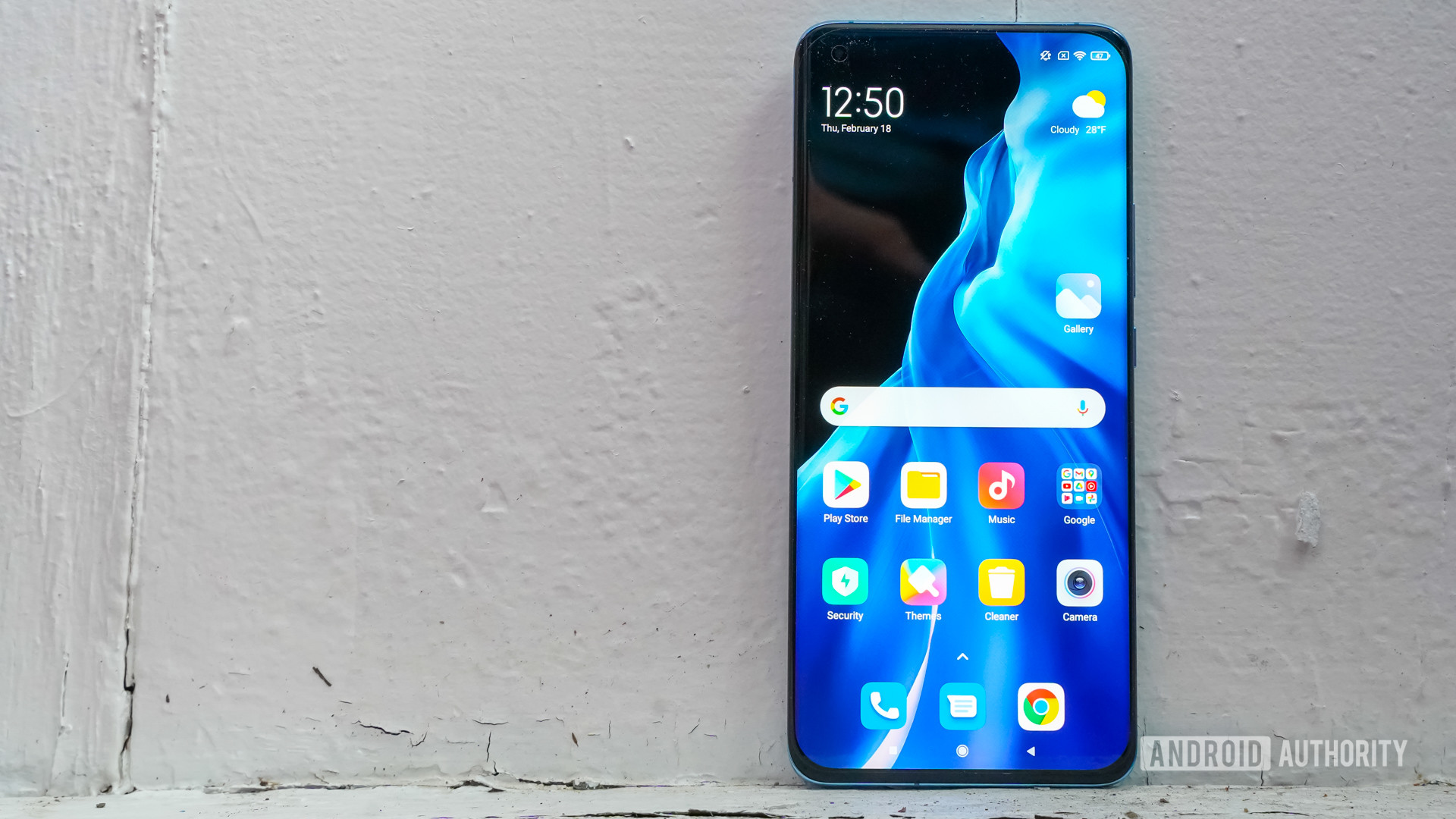
- Aluminum, Gorilla Glass Victus
- 164.3 x 74.6 x 8.06mm
- 196g
- Under-display fingerprint reader
Xiaomi checked off all the boxes as it designed the Mi 11. It boasts a thinner, lighter build than last year’s Mi 10 and it comes in attractive frosted glass colorways. If you want sleek, the Mi 11 has you covered.
The phone is a metal and glass sandwich. Contoured glass slabs are fitted to the aluminum frame snugly. I particularly like the way the glass tapers near the side edges, which makes the phone more comfortable to carry around whether in your hand or your pocket. The metal frame is slim along the side rails and forms end caps on the top and bottom edges. The materials, fit, and finish are all top-notch. I tested the Horizon Blue model and I found its color-shifting look to be very attractive.
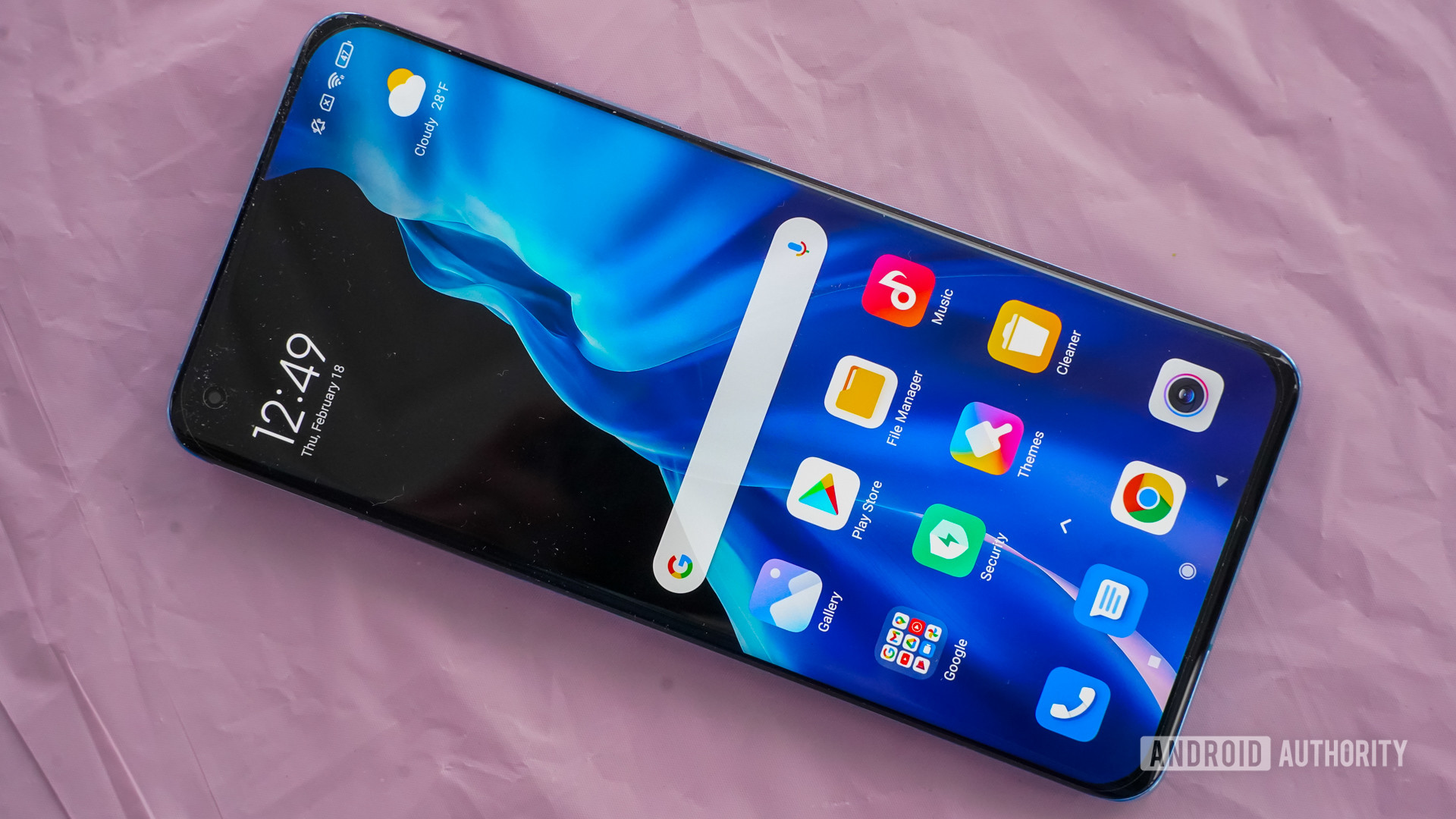
The large display makes for a large phone. You can’t have one without the other. The Mi 11 stands tall, but the slim aspect ratio of the display makes for a narrow-waisted phone. This helps with usability. The weight is really balanced. I found the phone comfortable to hold and use in all manner of positions; it never felt awkward.
The materials, fit, and finish are all top notch.
Controls and ports are standard for a modern flagship. The screen lock button and volume toggle are on the right edge of the phone. They have good profiles and excellent action. The SIM tray is tucked into the bottom edge of the phone. It supports up to two SIM cards, but not memory cards. Along the bottom, you’ll also find the USB-C port, a microphone, and a speaker. A second speaker is located on the top edge, as are more microphones. I’ll take this opportunity to point out that the phone supports stereo sound that’s been tuned by Harmon. The brightness and clarity are excellent, as is bass response all things considered. The speakers can easily fill a typical room with sound.
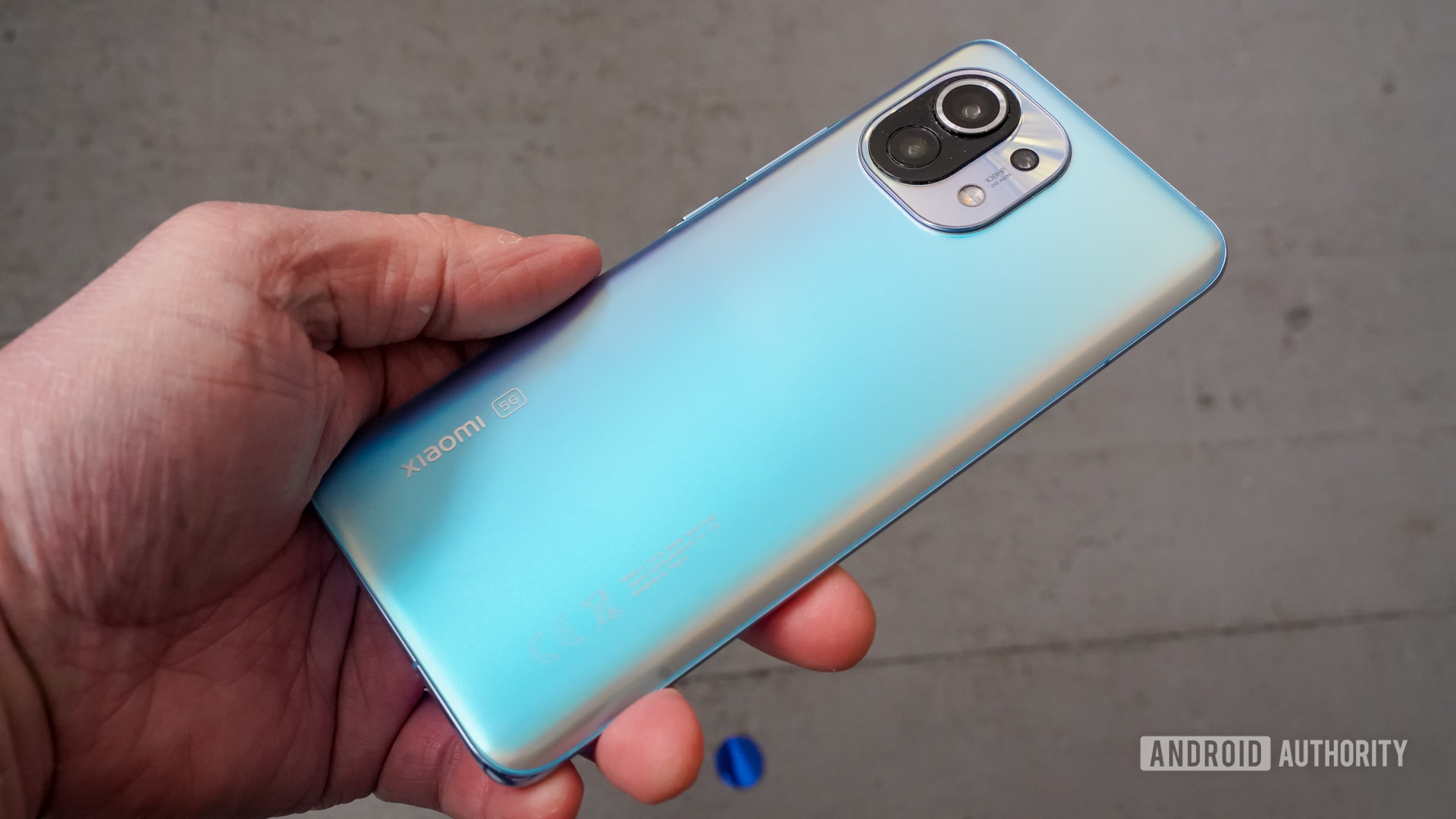
Apart from the frosted glass (which, sadly, still collects fingerprints), the most visible aspect of the design is the rear camera module. It’s a circle, set in an oval, set in a squircle. It reminds me of camera designs from the 1980s, for some reason. All the curves give it an analog look that I find appealing. You may think it’s jarring. Xiaomi used different tones to set apart the three pieces of the module. It’s something. Like most modern phones, the Mi 11’s camera module is large and sticks out from the rear glass quite a bit. This means the phone will wobble when placed on hard surfaces. (It’s not quite as large as the camera module of the Mi 11 Ultra.)
The phone is splash-proof, according to Xiaomi, but it cannot be submerged. That’s a major missing feature for a flagship. Much of the competition boasts an IP68 rating for protection from dunking.
Last, the phone’s fingerprint reader is built into the display. It’s a breeze to set up and use, and I found it consistently quick and accurate.
The Xiaomi Mi 11 is every bit as appealing as other market-leading phones. Some might think it’s even more so.
Display: Truly great
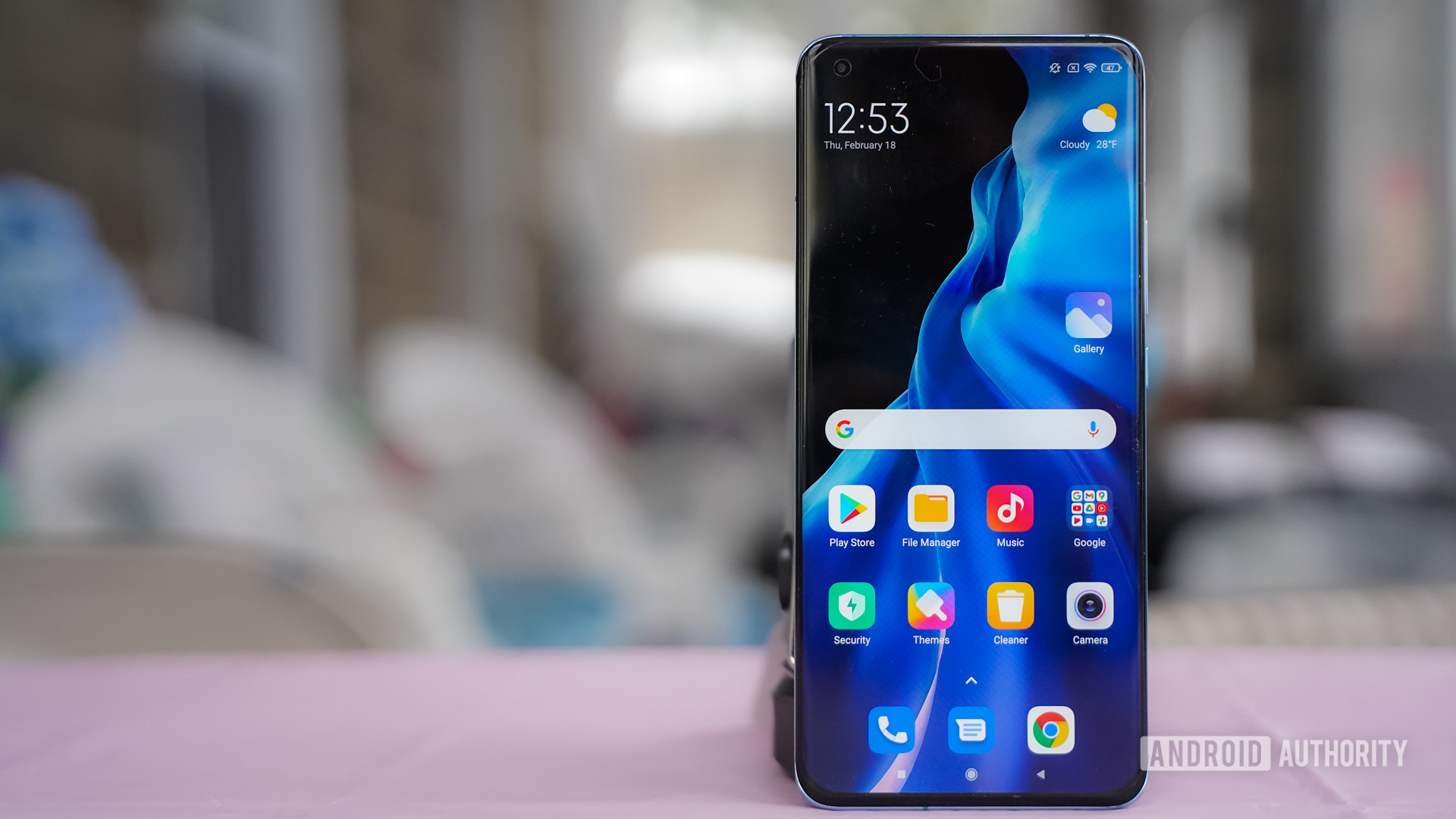
- 6.81-inch AMOLED
- WQHD+ (3,200 x 1,440)
- 515ppi
- 20:9, 120Hz
I could talk about the display all day. I’ll say this to get the discussion going: it’s good. Really good.
Out of the box, the 6.81-inch AMOLED screen is set to Full HD+ resolution and 60Hz refresh rate. You can ramp the resolution up to WQHD+ and the refresh rate up to 120Hz if you wish. Unlike some devices (ahem, Samsung), the Mi 11 allows you to set the high resolution and high refresh rate at the same time. In this setting, the refresh rate will jump around from as low as 30Hz to as high as 120Hz depending on what you’re doing. With these settings turned up, the screen looks fantastic. The high resolution means everything on the screen is sharp and clear, and the fast refresh rate means motion is silky smooth.
Xiaomi has delivered a very impressive display that's great for watching movies
Let’s start with the brightness. You get 900 nits, with peak brightness reaching 1,500 nits. The contrast ratio is 5,000,000:1. Moreover, the screen supports 10-bit color, HDR10+, and DCI-P3. All this means you get rich colors and deep contrast. This is particularly evident when you find some high-quality content, such as HDR movies/shows from the likes of Netflix.
The Xiaomi Mi 11 includes super-resolution tech to help with your content. It boosts standard definition content to high definition and high definition content to WQHD+. In other words, your older video files will still look good on the high-res screen. It’s not a perfect implementation, but there is an obvious improvement, particularly when viewing SD content.
You get the full spate of sensors and controls. There’s a 360-degree ambient light sensor for reading the color of the light where you are. This pairs with the sunlight and reading modes to give you proper white balance and color. There is also mistouch prevention tech built into the display at the hardware level. This means your palm won’t accidentally launch apps when it brushes against the display’s edge. Speaking of which, the screen’s curve is pretty tight along the side edges. The curved glass doesn’t impact the visibility, clarity, or brightness of the screen at all.
Taken as a whole, Xiaomi has delivered an impressive display that is great for watching movies.
More reading: The best phones with in-display fingerprint scanners
Performance: World class
- Qualcomm Snapdragon 888
- Adreno 660 GPU
- X60 modem
- Wi-Fi 6, Bluetooth 5.2
- 8GB LPDDR5 3200MHz RAM
- 128GB/256GB UFS 3.1 storage
The Mi 11 is among the first wave of devices to ship with the Qualcomm Snapdragon 888 processor. It’s the top chip you can get in a smartphone right now and it has the goods.
In benchmark tests, the Mi 11 scored above most of the competition. It fared well against the Snapdragon 888-powered Galaxy S21 and even Apple’s high-powered iPhone 12 range. The Mi 11 blew the doors off phones running last year’s Snapdragon 865. The device ran our homemade Speed Test G benchmark in just 75 seconds. Most importantly, the phone performed exceedingly well in everyday use. Everything about the experience was exceptionally fluid and quick. Now that we’re a few months post-launch, there are plenty of other 888-powered phones in the market, but the Mi 11 is still a top performer.
Xiaomi is serious about the Mi 11's all-around performance. It's exceptionally fluid and quick.
I tested the phone with Asphalt 9 and it made short work of the game. The action was smooth and there was no lagging whatsoever. I’ll take the opportunity here to point out that the Mi 11’s display has a 480Hz response time, which means it reacts to your touch input much faster than most other phones. This improves the gaming experience in a noticeable way.
In addition, the Game Turbo software is a great tool for managing performance and cataloging your installed games. You can tweak a number of settings to achieve optimal gaming results. This shows that Xiaomi is serious about the Mi 11’s all-around capabilities, and not just its cinematic prowess. It’s a good gaming phone and a good everyday phone.
On the wireless front, there’s Wi-Fi 6, Bluetooth 5.2, and 5G on board the Mi 11. In other words, all the latest specs. The phone supports mid-band 5G, which means sub-6GHz. There’s no mmWave on this phone, but that’s not that big a loss. If you live in areas with 5G service, it’s possible the phone will support the spectrum your provider operates on. We were unable to test this feature.
Battery: It depends
- 4,600mAh battery
- 55W wired charging
- 50W wireless charging
- 55W GaN charger
Xiaomi has fielded a very competitive device when it comes to battery performance… in certain circumstances. The battery itself is large enough to push the phone through an entire day with room to spare. During our testing, it was rare the battery dipped below 50% after a full day’s use, despite running demanding benchmarks, using the camera, and playing games. The best I got was one and a half days with the battery under heavy duress. That’s a fine number for most any flagship.
Keep in mind, these results were with the display set to Full HD+ and the refresh rate set to 60Hz (which is how it’s set out of the box.) You will see a drop in battery life if you up the resolution and refresh rate to their higher settings. With both those specs maxed out, the phone barely made it through one day. That doesn’t surprise me one bit.
Read more: The best phone charging accessories
The device charges lickety-split. It supports 55W wired charging and 50W wireless charging. Moreover, Xiaomi includes a 55W GaN charger in the box. In our wired tests, the phone charged from 0% to 100% in just 47 minutes. Very few phones can match those speeds, but the Warp Charge 65T-supporting OnePlus 9 Pro actually bests them.
Last, the phone supports 10W reverse wireless charging for your accessories. It works, but it’s slow going.
Camera: Not Galaxy class

- Main: 108MP, f/1.85, OIS, AF
- Ultra wide: 12MP, f/2.4
- Telemacro: 5MP, f/2.4, AF
- LED flash
- Selfie: 20MP, f/2.2
- Video: 8K, 30fps
The camera is clearly where Xiaomi spent much of its engineering budget. As I pointed out earlier, the marketing around the phone centers on its ability to let users make movies like the pros do. That means a lot of hardware and a lot of software is on board this phone.
To start, it has a three-lens setup, with standard, wide-angle, and tele-macro lenses gracing the rear. Personally, I’d much rather have seen a true telephoto lens, rather than the macro. Both the 108MP main camera and the 20MP selfie camera bin down by a factor of four, making for 27MP and 5MP “Super Pixel” images, respectively. Video speeds range from 240fps for slow-motion down to 24fps for cinema-style footage at resolutions all the way up to 8K.
Your basic photos look good. I came away pleased with the results, if not totally blown away.
Your basic photos look good. I took the phone out to shoot some snaps one afternoon and came away pleased with the results, if not totally blown away. Shooting snow is hard, but the phone managed to keep detail in the drifts without overexposing it too much. It did struggle with shadows in the snow. You can see in the photos of the bridge that any detail in the bridge itself is gone. The same is true of the train tracks shot; the tracks offer no detail at all, they’re just dark lines in the snow. Focus was generally good, and I can’t complain about the sharpness of the shots I took.
Color was harder to capture. There’s not much color during the winter months here, but you can see the balloon, flower, and flag show off some nice color. What impressed me with these shots is the accuracy of the hues. The deep red of the flag really stands out against the wintry backdrop and was dead-on as far as accuracy was concerned.
Let’s talk zoom. The phone relies on its lenses and huge megapixel count to zoom from 0.6x to 30x. I thought wide-angle shots were a little soft, and there’s some obvious optical distortion when shooting buildings and such. You can control this a little with software if you want. Zooming out to 5x worked wonderfully, with relatively sharp results. The 10x and 30x zoom region is pretty much worthless, as you can tell by taking a gander at the ducks below. The tele-macro uses zoom to help you get closer to your subject without pressing the phone directly against what you’re shooting. You need a steady hand to get the sharpest shots, and the 5MP resolution is a definite limitation.
The selfie camera is decent. In the selfie and the self-portrait below, you can see that I am in good focus. There’s enough detail in the background (trees, wall) of each to keep me happy, though that came at the expense of the snow, which is blown out. I like the bokeh effect of the portrait shot and the colors turned out well.
Camera modes are robust. You get a basic carousel in the viewfinder that slides between pro, video, photo, portrait, and more. Extended shooting modes include night, 108MP, short video, panorama, document scanner, vlog, slow motion, time-lapse, dual video, movie effects, long exposure, and super moon. Oddly, these modes aren’t fully installed. Tapping on vlog, for instance, caused the phone to download the required software.
Beyond these, the video recorder has dedicated movie modes, including magic zoom, slow shutter, time freeze, night time-lapse, and parallel world. Each of these employs some software trickery to snag shots you’d normally need expensive equipment or editing suites to capture.
As you can tell, you’ve got tons of options on the video front. Though it’s possible to capture 8K footage, I strongly suggest you keep it set to 4K at 60fps. This delivers crisp, clean results that are smooth and pleasing to the eye, though the colors were a touch muted.
See also: The best camera phones you can get
As for the special cinema modes, you need a good subject and some action to really take advantage of them. If you’re filming your friends’ skateboard antics, you’ll have fun with the dolly zoom effect, though I submit that the night time-lapse feature is the best tool of the bunch. It reduces grain when shooting in the dark.
Taken as a whole, the Xiaomi Mi 11’s camera is very good, though it falls short of the results available from Apple, Google, and Samsung. It also falls short of what the high-powered Xiaomi Mi 11 Ultra can do. The Mi 11 Ultra’s camera system is a big step up in terms of optics, which leads to sharper photos across the board.
You can view full-resolution shots here. You can also check out how the Xiaomi Mi 11 stacks up against the OnePlus 9 Pro’s camera in our dedicated shootout.
Software: Thick skinned
- Android 11
- MIUI 12
Android 11 is at the chewy core of the Xiaomi Mi 11, and that’s good. Android 11 is a fine base platform for the phone. The device does run Xiaomi’s MIUI 12 on top of Android 11 and this is what you’ll see when interacting with the phone. MIUI 12 as a skin is much better than older versions of MIUI. It still has a certain look to it that I don’t care for, but the basic UI elements of Android 11 are more apparent out of the box. There is some bloatware on board, mostly games. You can get rid of most of the bloatware, but not quite all of it.
Xiaomi shipped the phone with MIUI 12, but updated it to MIUI 12.5 within several weeks of launch. MIUI 12.5 focuses on simplifying gestures and other UI navigation pain points. We also asked Xiaomi how many system updates will be made available to the Mi 11, and how long security updates will be pushed out. The company gave us a non-answer: “The updates cycles of our devices are in accordance with our agreements with Google and comply with corresponding policies.” Xiaomi’s record for updating phones is uneven, so that’s something to keep in mind if you’re keen to have future versions of Android.
Xiaomi Mi 11 specs
| Xiaomi Mi 11 | |
|---|---|
Display | 6.81-inch AMOLED 19.5:9 aspect ratio, 92.4% body/screen ratio 120Hz WQHD+ HDR10+ |
Processor | Qualcomm Snapdragon 888 Adreno 660 GPU |
Memory | 8GB LPDDR5 RAM |
Storage | 128GB/256GB |
Battery | 4,600mAh 55W wired charging 50W wireless charging 55W charger in box |
Camera | Rear: Main: 108MP, f/1.85, 1/1.33-in sensor, OIS Ultra-Wide: 13MP, f/2.4, 123-degree FoV Telephoto macro: 5MP, f/2.4, 3cm to 10cm range Front: Selfie: 20MP f/2.2, punch-hole cutout |
Connectivity | Bluetooth 5.2 Wi-Fi 6 5G (Sub-6GHz) |
Dimensions | 164.3 x 74.6 x 8.06mm |
Weight | 196g |
Value and competition
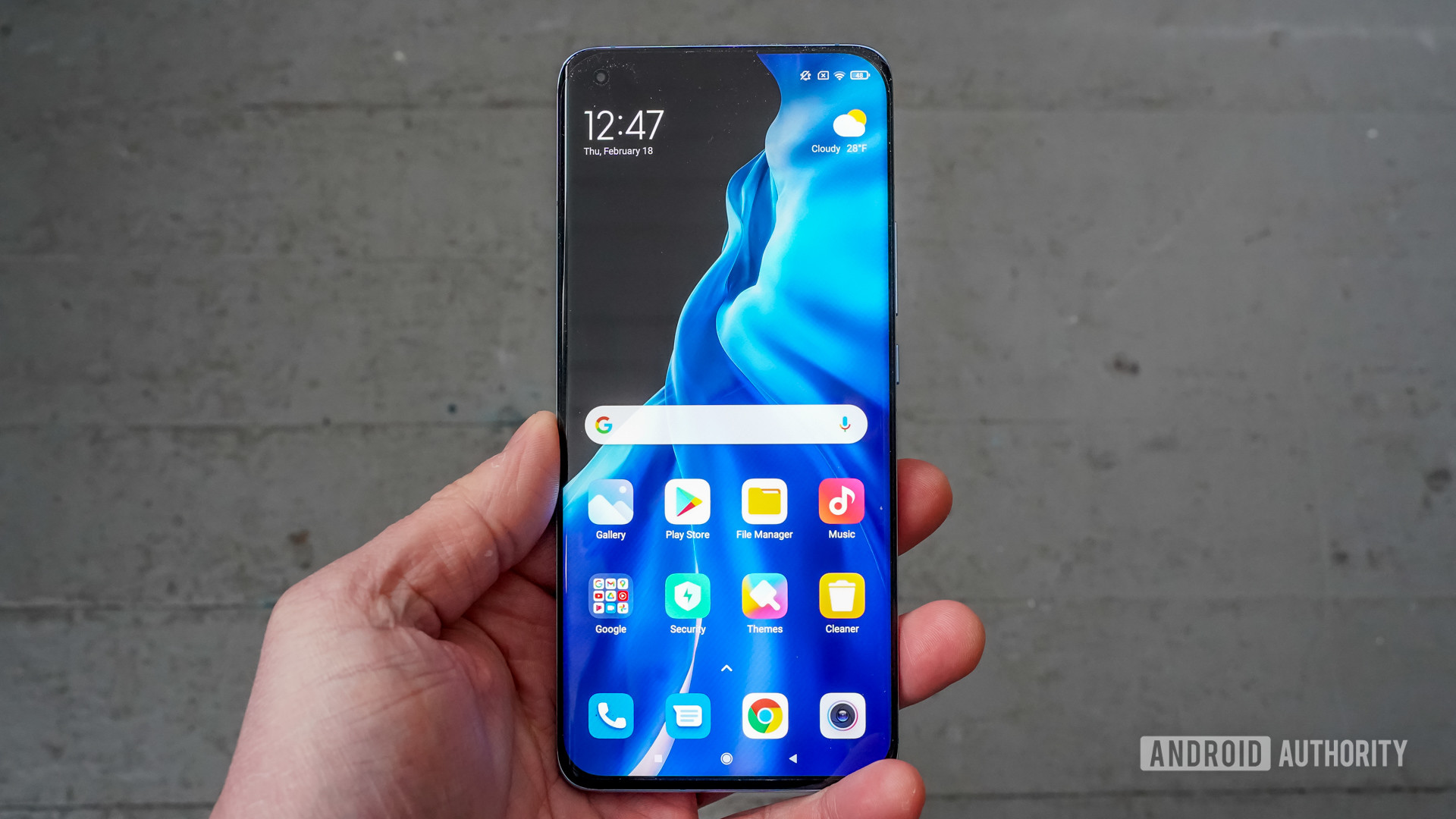
Priced at under €800, even for the 256GB storage variant, the affordability of the Xiaomi Mi 11 means Samsung and others need to do a whole lot more to appeal to buyers. It’s hard to say no to such a reasonable price for a Snapdragon 888-powered phone. If that’s the chief selling point for you, you needn’t look elsewhere.
In terms of competing phones, there are plenty to consider. Many come from Xiaomi itself. For example, the Mi 11 Lite offers a way to save cash, while the Mi 11 Pro and Mi 11 Ultra have their own strong suits. The Mi 11 Pro adds waterproofing, a bigger battery, and faster charging but is sadly limited to China, so you’ll have to import it if you really want it. Meanwhile, the Mi 11 Ultra (€1,199) adds a more functional camera with a massive bump and the best specs — all for a price.
Related: OnePlus 9 Pro vs Xiaomi Mi 11
Samsung’s Galaxy S21 family ranges in price from €849 to €1,349. That’s a lot more scratch to cough up for a phone. While I think the S21 range is outstanding, it may be worth saving €100 or more to go with the Mi 11 if you prefer the design or other aspects of the hardware. Samsung’s phones do beat the Mi 11 on camera performance, however.
If you want the most bang for your buck, you needn't look elsewhere.
In terms of raw performance, there is now a lot of competition. A large number of competing flagships are available from the likes of OPPO, OnePlus, and others that have Snapdragon 888 processors on board. Most Snapdragon 888 phones put up similar performance numbers, which is to say it’s the little things like battery life and camera performance that separate the pack.
In the affordable space, however, the Xiaomi Mi 11 is hard to beat. Only the OnePlus 9 ($729/€699) comes close in terms of absolute performance and bang for your buck.
Xiaomi Mi 11 review: The verdict
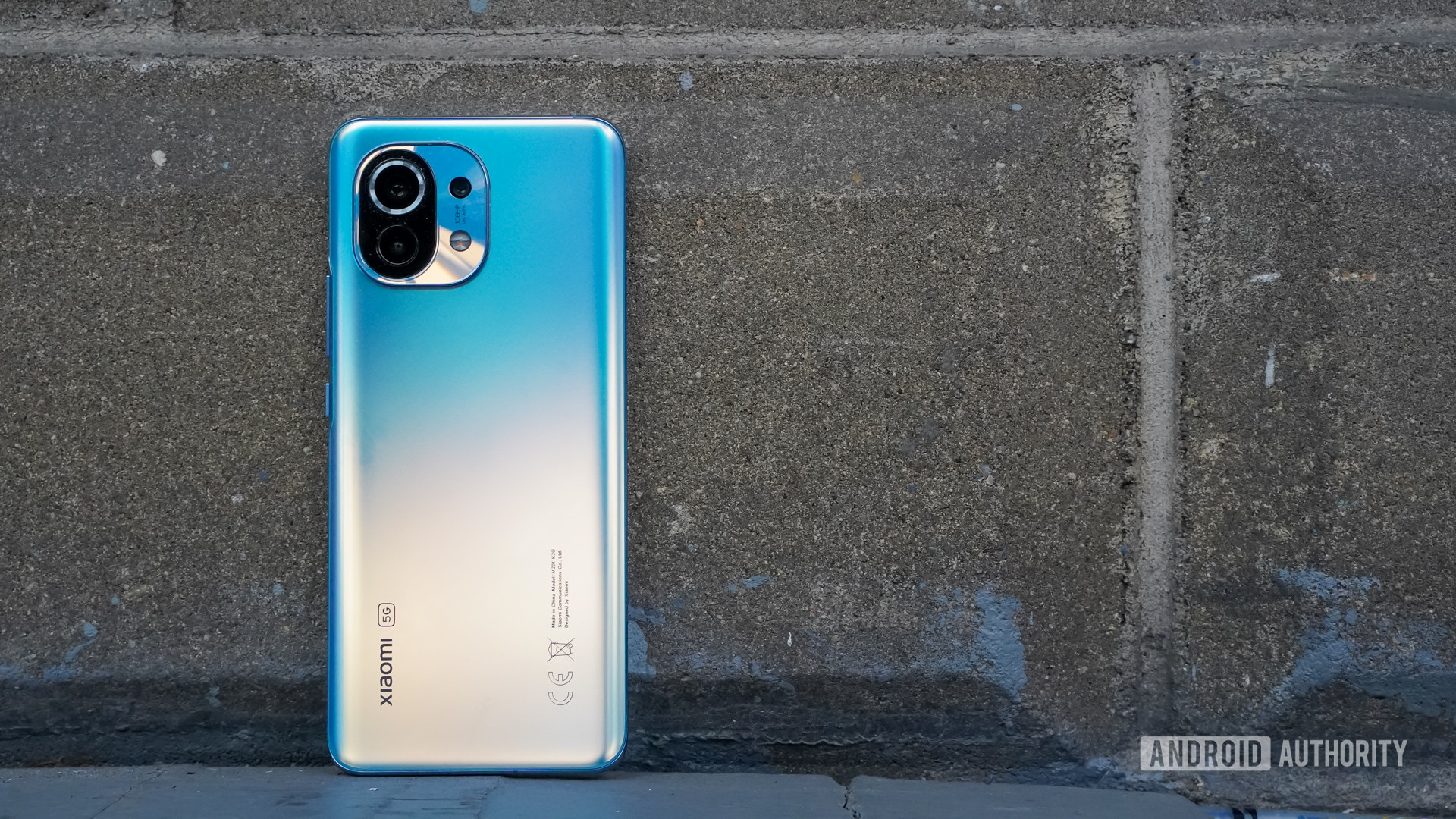
Xiaomi has created a compelling phone in the Mi 11. It has the right price and the right specs to compete with the current crop of flagships in the market. There are just a few things holding it back from true greatness.
The design and manufacturing are top-notch. It’s a pretty phone that looks as good as it performs. Highlights include the gorgeous screen, the stellar sound, and the sheer power of the Snapdragon 888. The Xiaomi MI 11 is a performant beast and an excellent companion when it comes to binging movies or campaigning your favorite games. Battery life is also solid, though it takes a hit when you push the phone to its limits.
At €749, the Xiaomi Mi 11 has some swagger as it enters the flagship race.
If there’s anything holding the phone back from greatness, it’s the camera. The Mi 11’s camera performs very well, but it stops short of excellence. In the competitive flagship space, excellence is a must. MIUI 12.5 is another chink in the phone’s armor. It’s also a shame that there’s no IP rating.
The Xiaomi Mi 11 is available for €749 in selected European markets. At that price, it’s got some swagger as it enters the flagship race. If the best from Samsung and Apple is too pricey for you, then the Xiaomi Mi 11 is an enticing alternative.